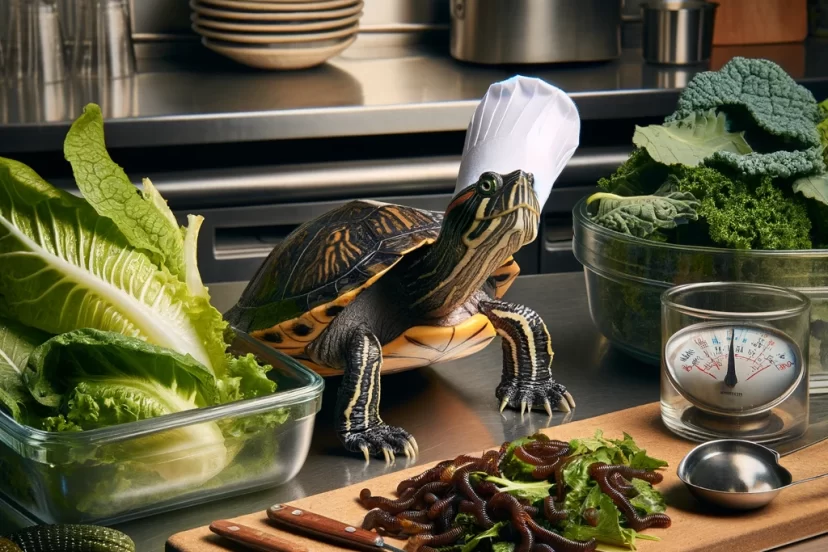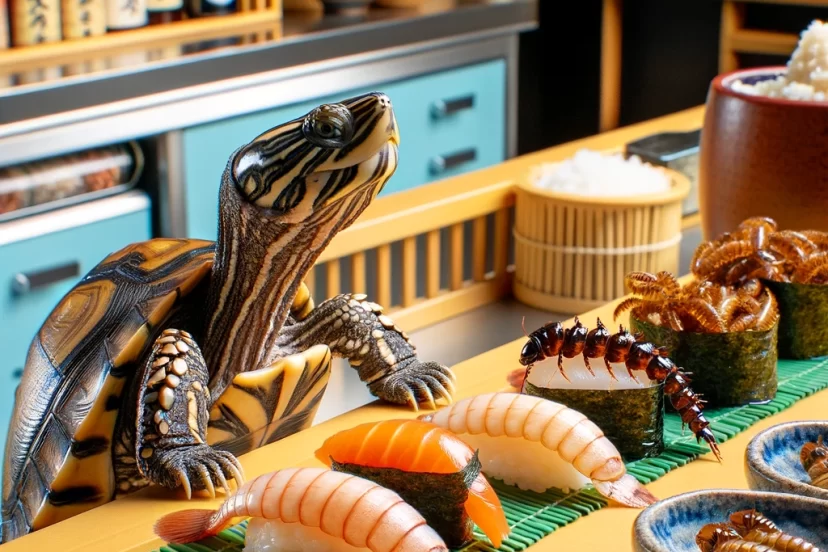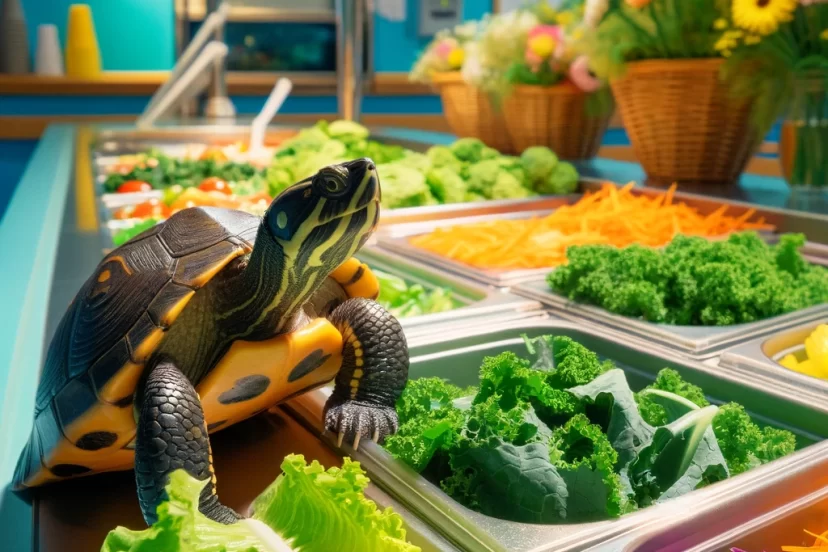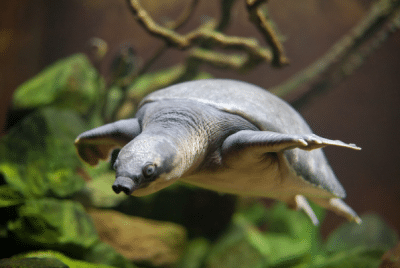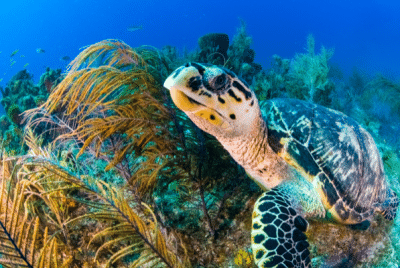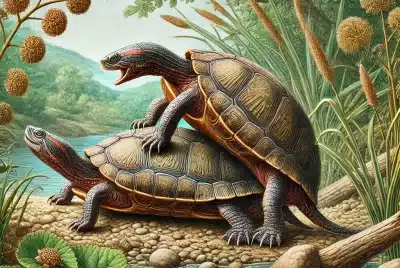What to Feed Peninsula Cooters?
Introduction to Peninsula Cooters
Hey there, fellow owners of peninsula cooters! If you’ve got this awesome breed of turtle, you’re in for a treat. These charming creatures are not only a delight to watch but also have specific dietary needs that, when met, can keep them healthy and happy. Let’s dive into what to feed your Peninsula Cooter to ensure they thrive.
Understanding Peninsula Cooters’ Natural Diet
Before we get into the specifics, it’s essential to understand what Peninsula Cooters eat in the wild. These turtles are omnivores, enjoying a mix of plants and small aquatic animals. Knowing this helps us mimic their natural diet in captivity.
Aquatic Plants
Peninsula Cooters love munching on aquatic plants, which are a staple in their natural diet. In the wild, these turtles feast on various types of aquatic vegetation, providing them with essential nutrients and fiber necessary for their health. The fibrous content of these plants aids in digestion, ensuring that their digestive systems function smoothly.
When it comes to feeding your Peninsula Cooter in captivity, you can offer them a variety of aquatic plants to mimic their natural diet. Duckweed is an excellent choice; it’s small, easy for turtles to eat, and packed with nutrients. Water lettuce is another fantastic option. Its broad, leafy structure makes it easy for turtles to nibble on, and it provides a good source of vitamins and minerals. Additionally, water hyacinth is a popular choice among turtle keepers. Not only does it offer nutritional benefits, but it also helps keep the water clean by absorbing excess nutrients.
Including these plants in your turtle’s diet will not only ensure they receive the necessary nutrients but also promote a healthy digestive system. Regularly providing a mix of duckweed, water lettuce, and water hyacinth will keep your Peninsula Cooter happy and healthy. Remember, a varied diet is key to preventing nutritional deficiencies and supporting overall well-being. So, make sure to include a variety of these aquatic plants in their daily meals for optimal health.
Algae
Algae is another staple in the natural diet of Peninsula Cooters, and it’s crucial for their overall health and well-being. While it might not sound appetizing to us, for your turtle, it’s a delightful treat. Algae is packed with essential vitamins and minerals, such as Vitamin A, Vitamin C, and calcium, which are vital for maintaining a healthy shell and robust immune system. Including algae in their diet can help prevent nutritional deficiencies and promote optimal growth and development.
Incorporating algae into your Peninsula Cooter’s diet can be done in a few ways. One convenient method is through algae wafers, which are readily available at pet stores. These wafers are specially formulated to provide the nutritional benefits of algae in a form that’s easy to feed. Alternatively, you can allow natural algae to grow in their tank. This can be achieved by ensuring the tank receives sufficient light and maintaining good water quality. The presence of algae not only provides a natural food source but also creates a more natural and stimulating environment for your turtle.
Regularly offering algae to your Peninsula Cooter ensures they receive the nutrients they need, mimicking their wild diet and supporting their overall health. Whether through algae wafers or natural growth, this simple addition can make a significant difference in your turtle’s well-being.
Small Aquatic Animals
In the wild, Peninsula Cooters also eat small aquatic animals, playing a significant role in their overall diet. These small creatures include snails, insect larvae, and tiny fish. Such items are a natural source of protein, essential for the growth, muscle development, and shell health of your turtle. Protein is vital, especially for young and growing turtles, as it supports their rapid development and ensures their shells develop strong and resilient.
Including small aquatic animals in your Peninsula Cooter’s diet can mimic their natural feeding habits, providing both nutritional and psychological benefits. Live food encourages natural hunting behaviors, making feeding time more stimulating and engaging for your turtle. Watching your turtle chase and capture live prey can be a fascinating experience, reflecting their wild instincts even in captivity.
While you don’t need to go fishing or catch these animals yourself, you can easily purchase live food from pet stores or online suppliers. Options like crickets, mealworms, and small feeder fish are commonly available and can be introduced into your turtle’s diet occasionally. Just ensure that the live food is sourced from reputable suppliers to avoid any potential health risks or introducing diseases. By providing a varied diet that includes small aquatic animals, you’re contributing to the overall health and happiness of your Peninsula Cooter.
Importance of a Balanced Diet for Peninsula Cooters
Nutritional Needs
Just like us, turtles require a well-rounded diet to maintain their health and well-being. Providing a mix of fresh vegetables, high-quality proteins, and essential supplements is key to ensuring they receive all the nutrients they need. Vegetables offer vital vitamins and minerals, while proteins support muscle growth and energy levels. Supplements, particularly calcium, are crucial for strong shell development and overall vitality. This balanced diet promotes healthy growth, supports immune function, and enhances their quality of life. By understanding and meeting their nutritional needs, you can help your Peninsula Cooter thrive and lead a long, healthy life.
Common Dietary Mistakes
It’s easy to make mistakes when feeding your turtle, especially if you’re a new turtle owner. One prevalent error is overfeeding protein-rich foods, which can lead to serious health issues such as shell deformities and kidney problems. Over time, too much protein can cause the shell to grow too quickly, resulting in pyramiding or an uneven, bumpy shell. Another common mistake is not providing enough dietary variety, which can lead to nutrient deficiencies. A lack of essential vitamins and minerals can affect their growth, energy levels, and overall health. To ensure your Peninsula Cooter stays healthy, let’s explore the best foods to avoid these pitfalls.
Best Foods to Feed Your Peninsula Cooter
Vegetables
Vegetables should be a significant part of your Peninsula Cooter’s diet. Offer a mix of These are packed with vitamins and minerals. You can also include shredded carrots, squash, and bell peppers for variety.
Commercial Turtle Food
Commercial turtle food can be a convenient and nutritious option. Look for high-quality brands that list natural ingredients. These foods are formulated to provide a balanced diet and are easy to store and feed. However, don’t rely on them entirely – variety is key.
Live Food
Live food, like crickets, mealworms, and small fish, can be an excellent protein source. Feeding live food occasionally mimics their natural hunting behavior and provides enrichment. Just be sure to source these from reputable suppliers to avoid introducing diseases.
Supplements
Supplements, particularly calcium, are crucial for your turtle’s shell health. You can use cuttlebone, which they can nibble on, or powdered supplements sprinkled on their food. Vitamin supplements can also be beneficial, but consult with a vet to ensure you’re meeting their specific needs.
Feeding Schedule and Portions for your Peninsula Cooters
Frequency of Feeding
Young Peninsula Cooters have higher metabolic rates and require more frequent feedings compared to adults. For juveniles, aim to provide food every day to support their rapid growth and development. In contrast, adult Peninsula Cooters have slower metabolisms and can be fed every other day. This feeding schedule closely mimics their natural eating habits in the wild, where food availability can vary. Sticking to this routine helps ensure they receive the necessary nutrients without the risk of overfeeding, which can lead to obesity and other health problems. Consistency in feeding times also helps establish a predictable routine for your turtle.
Portion Sizes
Portion control is vital when feeding your Peninsula Cooter. Overfeeding can lead to obesity and other health issues, making it crucial to provide the right amount of food. A good rule of thumb is to offer an amount of food that would fit into their head if it were hollow. This ensures they receive adequate nutrition without the risk of overindulgence. Measuring portions carefully helps maintain their health and prevents the development of conditions related to overeating. Consistency in portion sizes also aids in monitoring their dietary intake and adjusting it as needed to support their overall well-being.
Tips for a Healthy Feeding Routine for Peninsula Cooters
Monitoring Eating Habits
It’s important to closely observe your turtle’s eating habits. Regular monitoring can provide valuable insights into their health. If your Peninsula Cooter starts refusing food or shows decreased activity, it could indicate an underlying health issue. By keeping track of their appetite, you can detect changes early and address potential problems before they escalate. Consistent eating habits are a good sign, while deviations might require a vet’s attention. Early detection of issues through vigilant monitoring ensures your turtle stays healthy and happy. Always ensure your turtle has a varied and balanced diet to support their well-being.
Avoiding Overfeeding
Overfeeding is a common mistake among pet turtle owners. It’s easy to think that more food means a happier, healthier turtle, but that’s far from the truth. Overfeeding can lead to obesity, which can cause serious health problems, including shell deformities and liver disease. To keep your Peninsula Cooter in optimal health, it’s crucial to adhere to a strict feeding schedule and appropriate portion sizes. If you’re ever unsure about how much to feed, remember that less is often more. Offering too much food can do more harm than good, so always err on the side of caution.
Conclusion
Feeding your Peninsula Cooter the right diet is crucial for their health and happiness. By mimicking their natural diet, providing a variety of foods, and avoiding common mistakes, you can ensure your turtle thrives. Remember, a happy turtle is a healthy turtle!
FAQs
- Can Peninsula Cooters eat fruits? Yes, but in moderation. Fruits are high in sugar and should be given as occasional treats rather than a staple part of their diet.
- How often should I feed live food to my Peninsula Cooter? Once a week is usually sufficient. This provides protein and enrichment without overdoing it.
- What are the signs of a nutrient deficiency in turtles? Look for signs like soft shells, lethargy, and a lack of appetite. These can indicate a lack of essential nutrients.
- Can I feed my Peninsula Cooter fish food? It’s not recommended as fish food doesn’t meet the nutritional needs of turtles. Stick to foods specifically formulated for turtles.
- How do I know if my Peninsula Cooter is overweight? If you notice bulging around their limbs or difficulty retracting into their shell, they might be overweight. Adjust their diet and consult a vet if needed.

